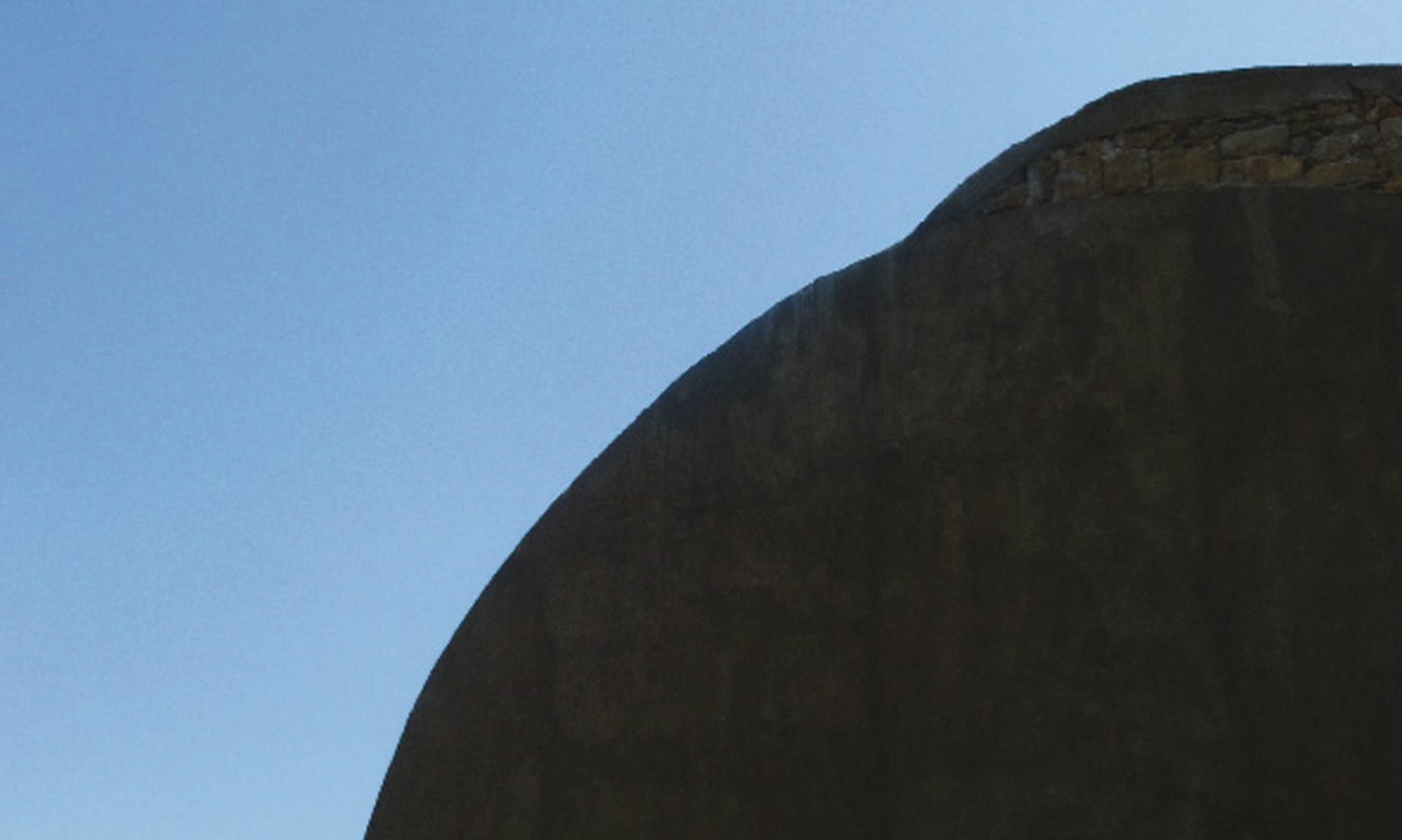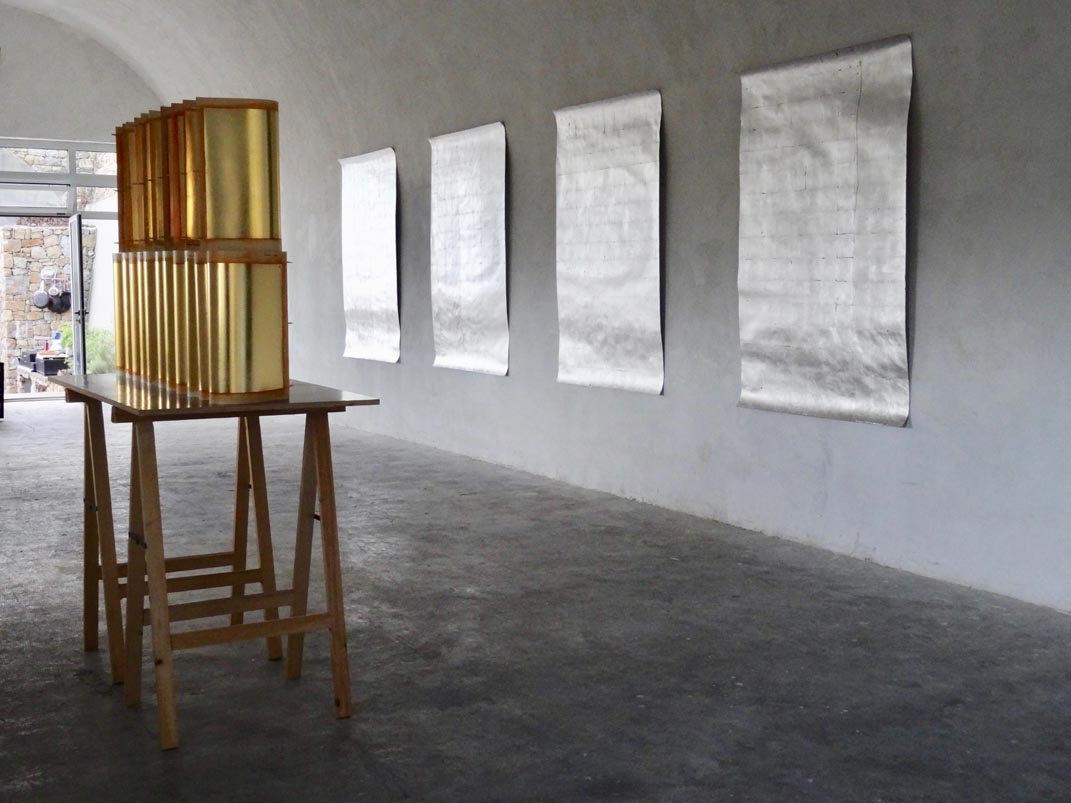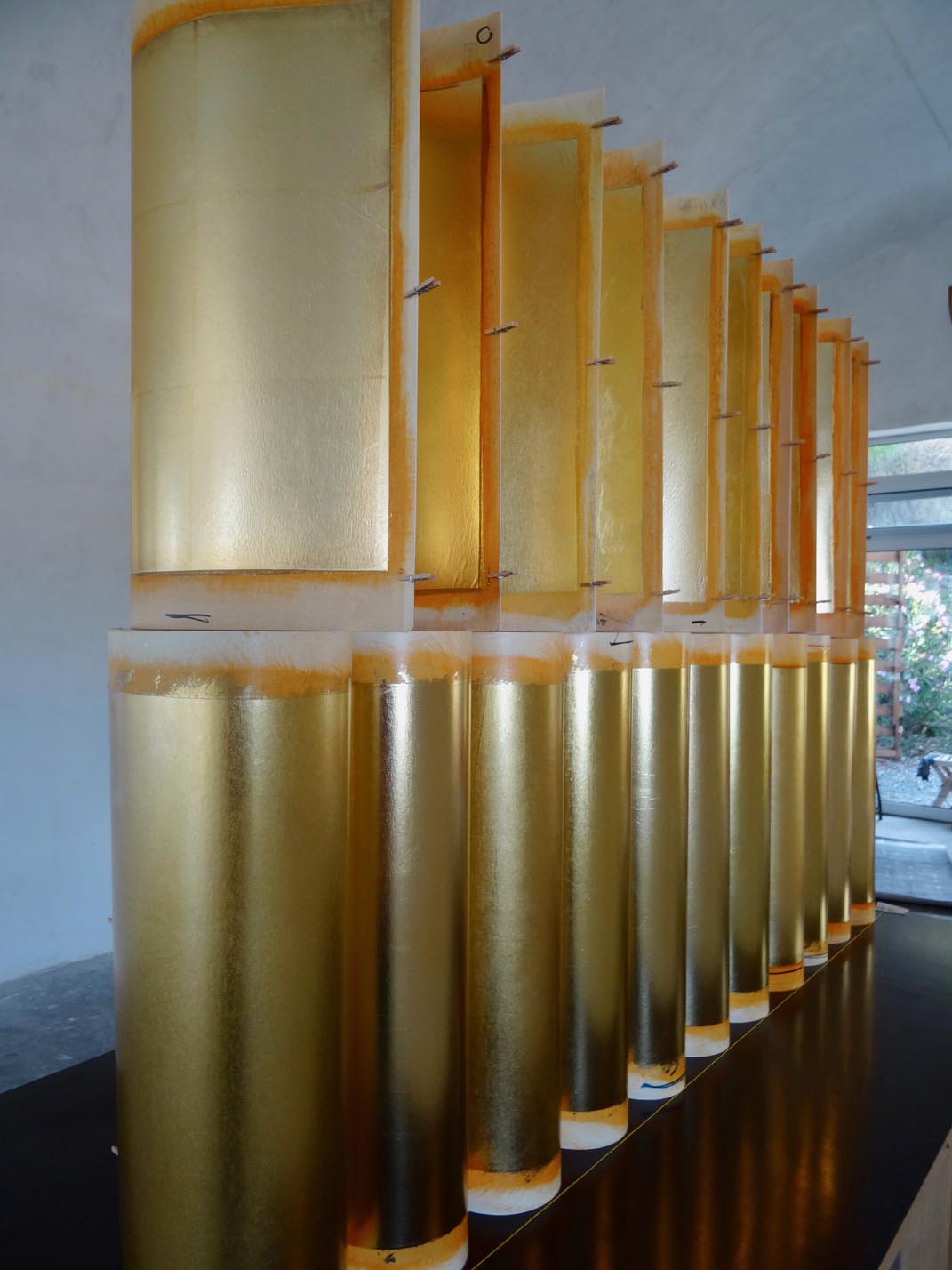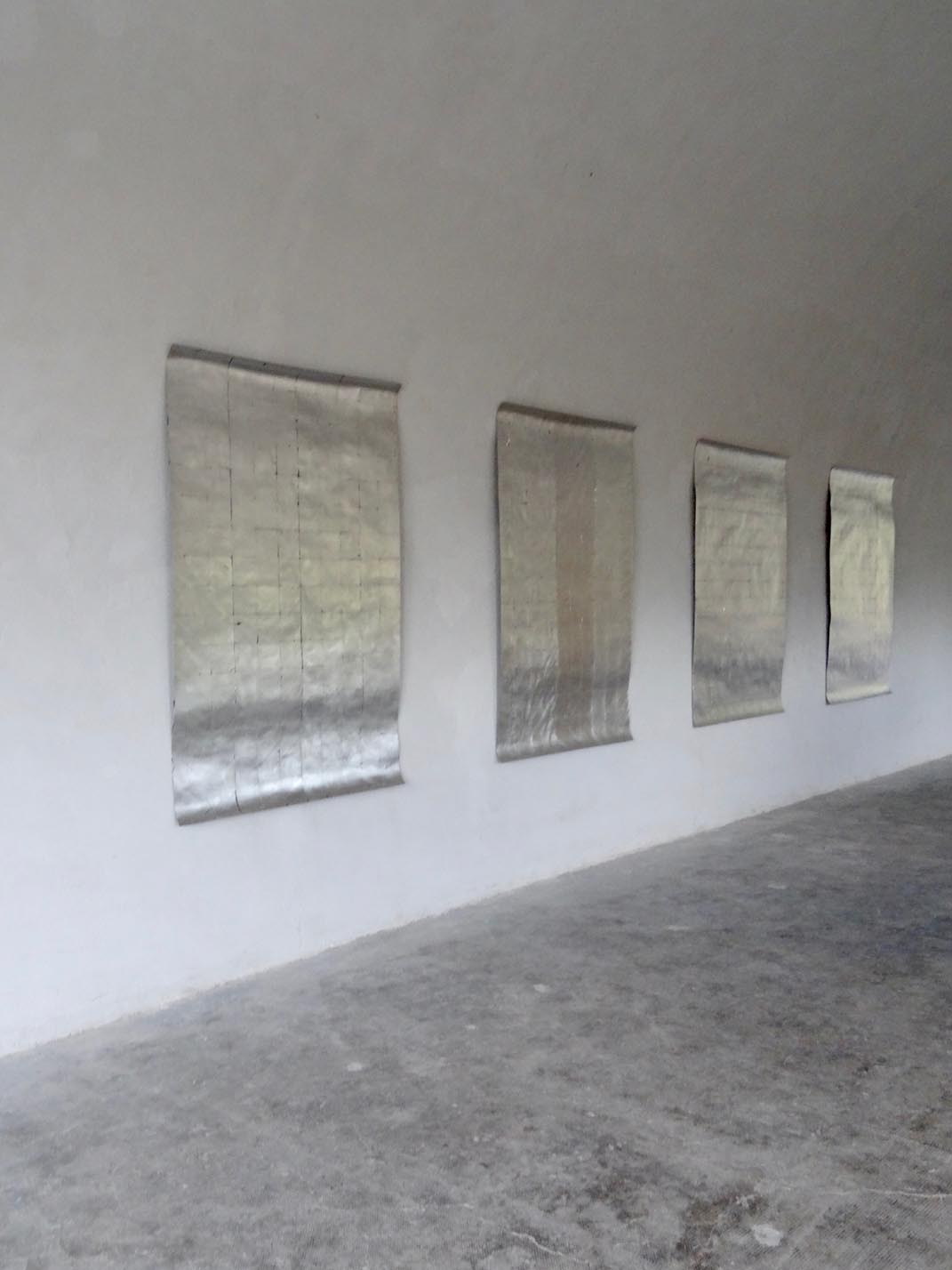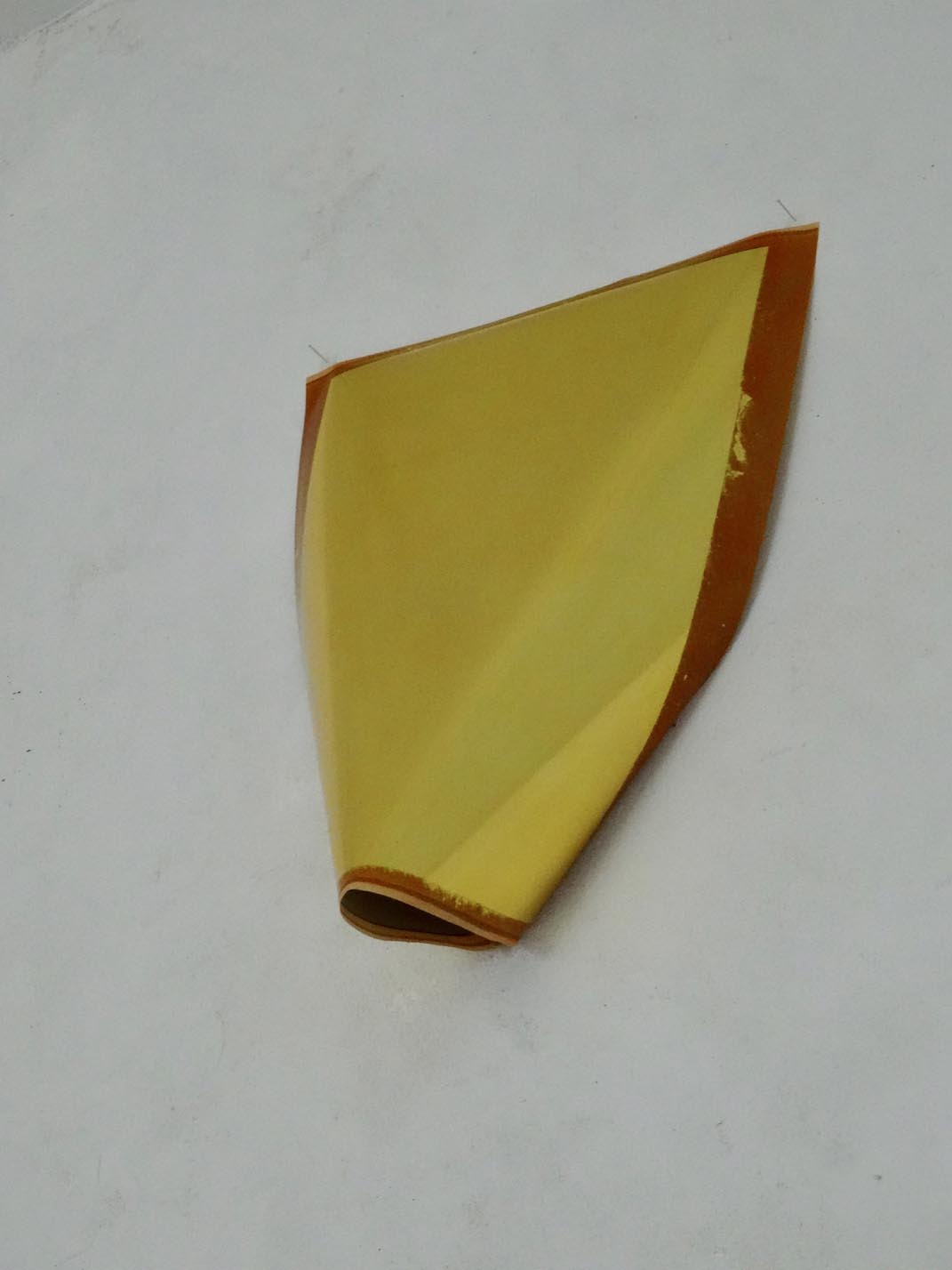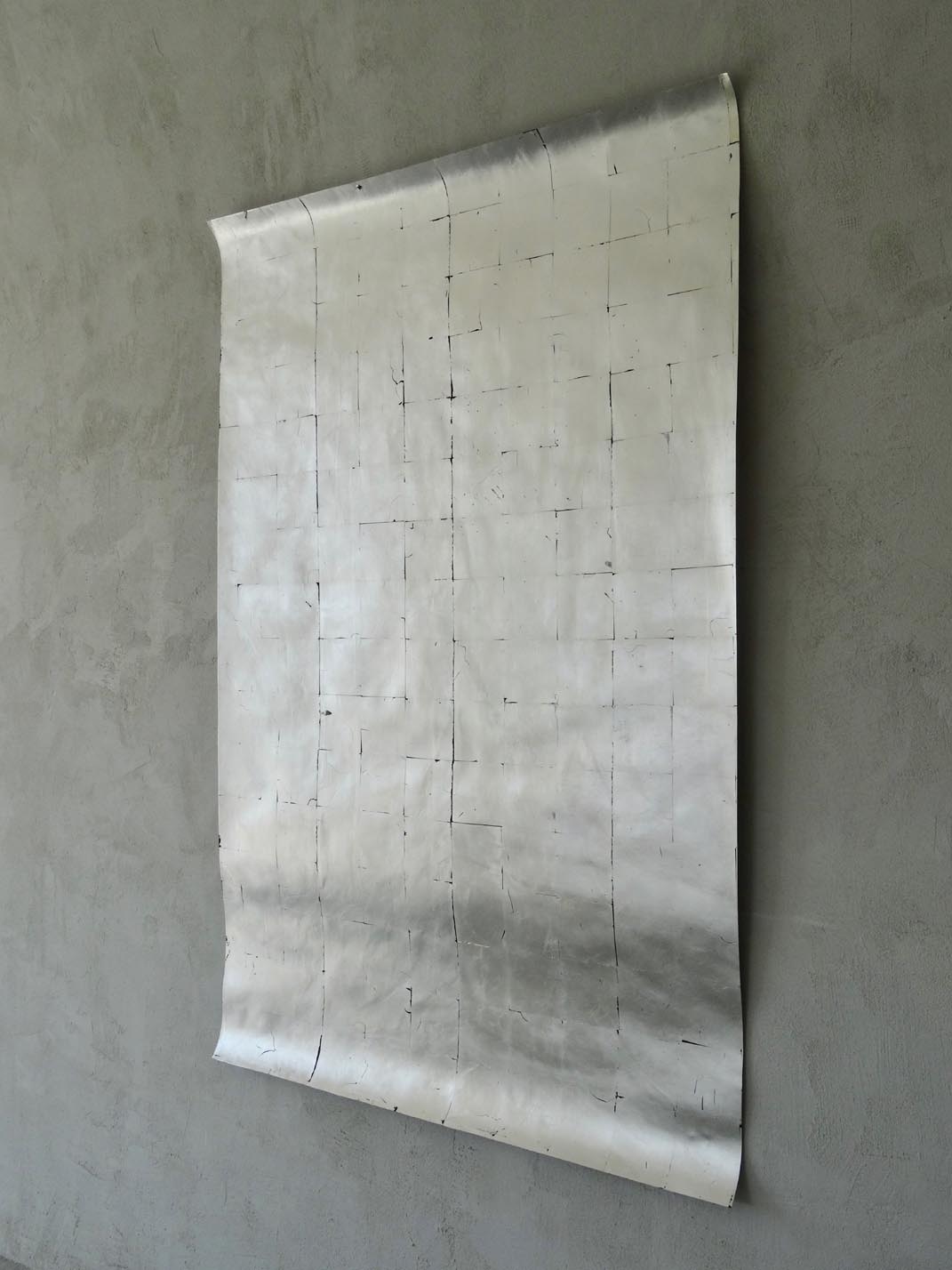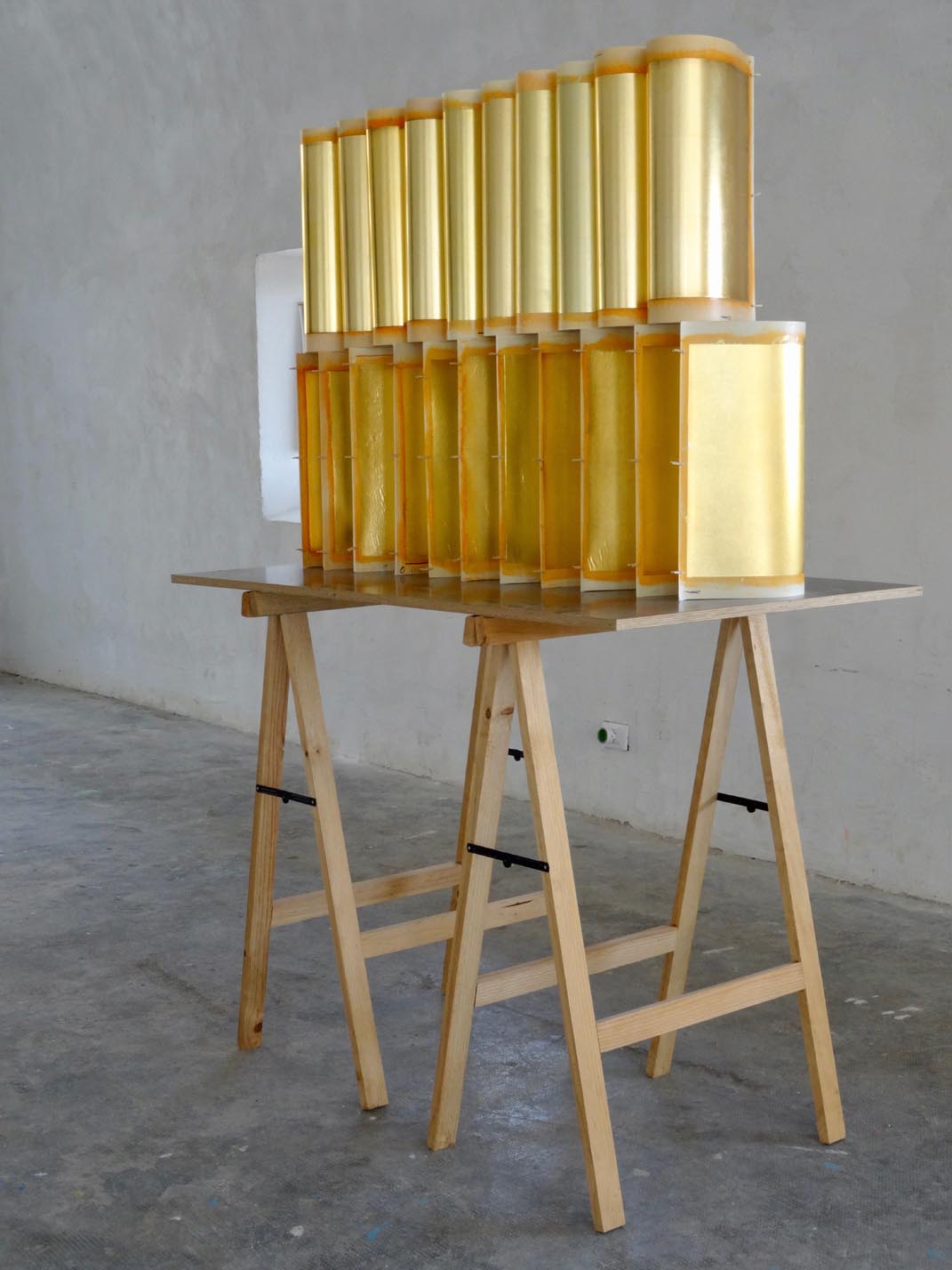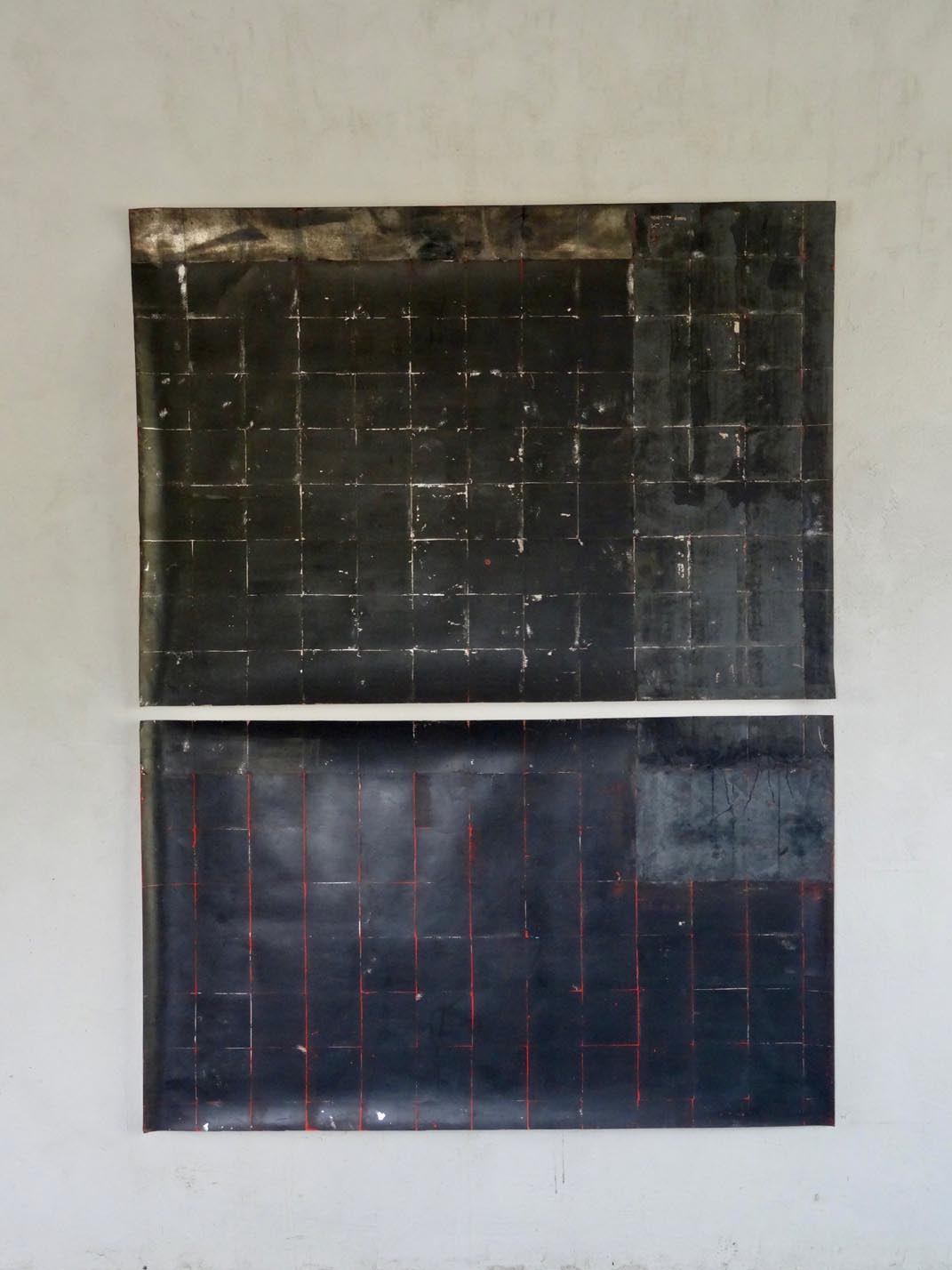RYUHA
Inheritance of School of Art and Inheritance of Style of Art
31.08.2019 – 22.09.2019
Ryuha is a school of art in which stylised and structured skills, techniques, traditions are inherited collectively. Normally this happens by bloodlines of the patriarch or through the students of the school – just as it does for Ikebana, tea ceremony, martial arts, among others. In Japanese painting, Tosa-ha, Kano-ha or Rin-pa are generally the most well-known of these Ryuha schools and styles. The style known as Rin-pa today in particular was initiated in 17th century Kyoto by Koetsu Honami (1558−1637) and Sotatsu Tawaraya (year of birth and death unknown). It was then significantly developed in the 18th Century by Korin Ogata (1658−1716) and his younger brother Kenzan Ogata (1663−1743). The style was inherited and introduced to Edo by Hoitsu Sakai (1761−1828) among others thereafter.
The main characteristics seen in the Rin-pa style are: employing gold/silver leaves for flat background foundation of painting; repeating the same ornamental patterns; establishment of a painting technique called ‘Tarashikomi’ (*1); asymmetric composition rather than symmetric; and tabulating all these elements onto one single flat surface – for example, a gold/silver leaved background, graphically painted tree, and ornamental patterns. What makes Rin-pa so outstanding amongst other schools is that firstly, a number of collaborations were attempted across different disciplines (for instance, Koetsu Honami made calligraphic work onto Sotatsu Tawaraya’s painting, Korin Ogata painted onto his brother Kenzan’s potteries, and so on). Secondly, it has been inherited and developed over time not by bloodlines or pupils, but by indirect relationships of followers with their own free-will and admiration. Such aspects also seem to reflect the Japanese people’s instinctive personality and talent, as well as the rather organic development of Japanese art itself. These were once explained as ‘awaiting new things coming from beyond the ocean [from China since ancient times, and from the Western world since the Meiji Restoration], accepting them, altering them as they please based on their own environment and views, sometimes turning them into parody – this sense of curiosity and applied skills.’ (*2)
Atsuo Hukuda (b.1958) is a sculptor who has been employing traditional Japanese painting techniques and materials such as gold leaf, silver leaf and/or Japanese Urushi lacquer. The minimal body of work, visualised strictly according to Hukuda’s concept ‘Dry / Light / Clear / Sharp’, consciously appeared along the lines of Rin-pa. Shuhei Fukuda (b.1997) on the other hand is an art student and a son of Hukuda. He is currently studying traditional Japanese painting, and exploring his own approach to the world by using traditional techniques and materials such as silver leaf. The relationship between the two artists – they coincidentally picked the same materials to work with, and are father and son – is certainly one of the forms of inheritance of tradition or skill. Hukuda, in addition, is also known as an active curator for over 35 years, notably through his achievements at CONCEPT SPACE. SUKI-MONO-TACHI: Ways Since Rin-pa is one of the exhibition series that he has been curating since 1991 under the aim of discovering today’s interpretations towards Rin-pa style within contemporary art.
Excerpt: Naoko Mabon, Independent Curator
(*1) It directly means ’dripping in’. A Japanese painting technique in which a second layer of paint is applied before the first layer becomes dry. Reportedly Sotatsu Tawaraya was the first person to consciously employ the technique.
(*2) Nobuo Tsuji, How to Overview Japanese Art: Iwanami: The Stream of Japanese Art #7, Iwanami Shoten, 2001, p.108.
Ryuha è una scuola d’arte in cui abilità, tecniche, tradizioni stilizzate e strutturate vengono ereditate collettivamente. Normalmente, questo avviene per linea di sangue del patriarca o attraverso gli studenti della scuola, proprio come accade per l’Ikebana, la cerimonia del tè, le arti marziali, tra gli altri. Nella pittura giapponese, Tosa-ha, Kano-ha o Rin-pa sono generalmente i più conosciuti di queste scuole e stili Ryuha. Lo stile noto oggi come Rin-pa in particolare fu iniziato nel XVII secolo a Kyoto da Koetsu Honami (1558-1637) e Sotatsu Tawaraya (anno di nascita e morte sconosciuti). Fu poi sviluppato in modo significativo nel XVIII secolo da Korin Ogata (1658-1716) e da suo fratello minore Kenzan Ogata (1663-1743). Lo stile fu ereditato e introdotto in Edo da Hoitsu Sakai (1761-1828) tra gli altri in seguito.
Le caratteristiche principali viste nello stile Rin-pa sono: l’utilizzo di foglie d’oro/argento per il fondo piatto della base della pittura; ripetere gli stessi motivi ornamentali; istituzione di una tecnica pittorica denominata ‘Tarashikomi’ (*1); composizione asimmetrica anziché simmetrica; e la tabulazione di tutti questi elementi su un’unica superficie piana, ad esempio uno sfondo con foglie d’oro/argento, un albero dipinto graficamente e motivi ornamentali. Ciò che rende Rin-pa così eccezionale tra le altre scuole è che in primo luogo, sono state tentate numerose collaborazioni in diverse discipline (ad esempio, Koetsu Honami ha eseguito lavori calligrafici sulla pittura di Sotatsu Tawaraya, Korin Ogata ha dipinto sulle ceramiche di suo fratello Kenzan e così via).
In secondo luogo, è stato ereditato e sviluppato nel tempo non da linee di sangue o allievi, ma da relazioni indirette dei seguaci con il loro libero arbitrio e ammirazione. Tali aspetti sembrano riflettere anche la personalità e il talento istintivi del popolo giapponese, nonché lo sviluppo piuttosto organico dell’arte giapponese stessa. Questi erano una volta spiegati come “in attesa di cose nuove provenienti da oltre l’oceano [dalla Cina fin dai tempi antichi, e dal mondo occidentale dalla restaurazione Meiji], accettandole, alterandole a loro piacimento in base al loro ambiente e punti di vista, a volte trasformando trasformarli in parodia – questo senso di curiosità e abilità applicate.’ (*2)
Atsuo Hukuda (n.1958) è uno scultore che ha impiegato tecniche e materiali pittorici tradizionali giapponesi come foglia d’oro, foglia d’argento e/o lacca urushi giapponese. Il corpo minimo del lavoro, visualizzato rigorosamente secondo il concetto di Hukuda “Secco / Luce / Chiaro / Nitido”, è apparso consapevolmente lungo le linee di Rin-pa. Shuhei Fukuda (n.1997) d’altra parte è uno studente d’arte e un figlio di Hukuda. Attualmente sta studiando la pittura tradizionale giapponese ed esplorando il proprio approccio al mondo utilizzando tecniche e materiali tradizionali come la foglia d’argento. Il rapporto tra i due artisti – hanno scelto casualmente gli stessi materiali con cui lavorare, e sono padre e figlio – è sicuramente una delle forme di eredità della tradizione o dell’abilità. Hukuda, inoltre, è anche noto come curatore attivo da oltre 35 anni, in particolare grazie ai suoi successi al CONCEPT SPACE. SUKI-MONO-TACHI: Ways Since Rin-pa è una delle serie di mostre che cura dal 1991 con l’obiettivo di scoprire le interpretazioni odierne dello stile Rin-pa nell’arte contemporanea.
Estratto: Naoko Mabon, curatore indipendente
Ryuha est une école d’art dans laquelle des compétences, des techniques, des traditions stylisées et structurées sont héritées collectivement. Normalement, cela se produit par les lignées du patriarche ou par les étudiants de l’école – tout comme pour l’Ikebana, la cérémonie du thé, les arts martiaux, entre autres. Dans la peinture japonaise, Tosa-ha, Kano-ha ou Rin-pa sont généralement les plus connus de ces écoles et styles Ryuha. Le style connu aujourd’hui sous le nom de Rin-pa en particulier a été initié au 17e siècle à Kyoto par Koetsu Honami (1558−1637) et Sotatsu Tawaraya (année de naissance et de mort inconnue). Il a ensuite été considérablement développé au XVIIIe siècle par Korin Ogata (1658−1716) et son jeune frère Kenzan Ogata (1663−1743). Le style a été hérité et introduit à Edo par Hoitsu Sakai (1761−1828) entre autres par la suite.
Les principales caractéristiques observées dans le style Rin-pa sont : l’utilisation de feuilles d’or/d’argent pour le fond plat de la peinture ; répéter les mêmes motifs ornementaux; mise en place d’une technique de peinture appelée « Tarashikomi » (*1) ; composition asymétrique plutôt que symétrique; et tabuler tous ces éléments sur une seule surface plane – par exemple, un fond de feuilles d’or/d’argent, un arbre peint graphiquement et des motifs ornementaux. Ce qui rend Rin-pa si remarquable parmi les autres écoles, c’est que tout d’abord, un certain nombre de collaborations ont été tentées dans différentes disciplines (par exemple, Koetsu Honami a réalisé un travail calligraphique sur la peinture de Sotatsu Tawaraya, Korin Ogata a peint sur les poteries de son frère Kenzan, etc.) .
Deuxièmement, il a été hérité et développé au fil du temps non pas par des lignées ou des élèves, mais par des relations indirectes d’adeptes avec leur propre libre arbitre et leur admiration. De tels aspects semblent également refléter la personnalité instinctive et le talent du peuple japonais, ainsi que le développement plutôt organique de l’art japonais lui-même. Celles-ci étaient autrefois expliquées comme « attendant de nouvelles choses venant d’au-delà de l’océan [de Chine depuis l’Antiquité et du monde occidental depuis la restauration de Meiji], les acceptant, les modifiant à leur guise en fonction de leur propre environnement et de leurs points de vue, tournant parfois en parodie – ce sens de la curiosité et des compétences appliquées.’ (*2)
Atsuo Hukuda (né en 1958) est un sculpteur qui a utilisé des techniques et des matériaux de peinture traditionnels japonais tels que la feuille d’or, la feuille d’argent et/ou la laque japonaise Urushi. L’ensemble minimal de l’œuvre, visualisé strictement selon le concept de Hukuda « Dry / Light / Clear / Sharp », est consciemment apparu dans le sens de Rin-pa. Shuhei Fukuda (né en 1997) d’autre part est un étudiant en art et un fils de Hukuda. Il étudie actuellement la peinture traditionnelle japonaise et explore sa propre approche du monde en utilisant des techniques et des matériaux traditionnels tels que la feuille d’argent. La relation entre les deux artistes – ils ont choisi par hasard les mêmes matériaux pour travailler, et sont père et fils – est certainement l’une des formes d’héritage de la tradition ou du savoir-faire. Hukuda, par ailleurs, est également connu comme conservateur actif depuis plus de 35 ans, notamment à travers ses réalisations au CONCEPT SPACE. SUKI-MONO-TACHI: Ways Since Rin-pa est l’une des séries d’expositions qu’il organise depuis 1991 dans le but de découvrir les interprétations actuelles du style Rin-pa dans l’art contemporain.
Extrait : Naoko Mabon, commissaire indépendante
